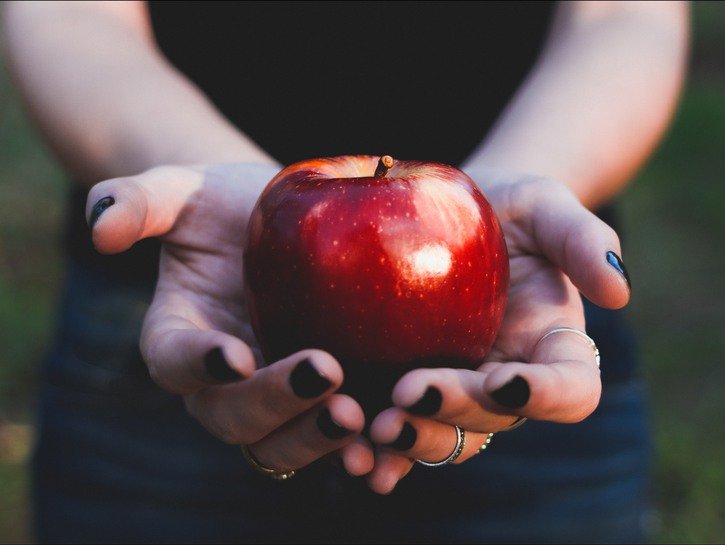Sinking your teeth into a juicy apple is one of the little treats we allow ourselves from time to time. Now that the fall weather is inching closer, the apple picking season is making its way back into our lives and we can soon enjoy a whole freshly picked bushel. Though, once we’ve chosen our favorite of the bunch and we rinse it under the sink, we might notice that the natural sheen the apple once had is now gone. Why is that?
The simple answer is that apples produce their own wax and manufacturers sometimes add their own food-grade wax to preserve the aesthetic appeal and expand its shelf life. The age-old debate about the health and safety of ingesting wax is still prevalent in today’s society, and professionals have weighed in on whether these apples are safe for consumption.
Why Do Apples Have Wax?

Before you go thinking that evil corporations spritz their produce with wax, it’s important to know that apples form their own wax. They’re one of those fruits that creates a natural wax to help them retain moisture, maintain firmness, and slow the degradation process.
That’s not to say that additional wax isn’t added sometimes. Occasionally manufacturers will cover the produce with an additional coating to increase their shelf life. Food-grade wax is often the culprit used and though it’s technically safe to eat, experts are still debating on whether you should be reaching for that apple.
Dr. Joe Kemble is a professor of Horticulture at Auburn University, and he spoke with Best Food Facts about this very subject. He explained that food-grade wax is safe to eat and scientists know this because humans can’t digest waxes on our own. “Humans do not have the ability to break down waxes and absorb their various components. Waxes simply pass through our digestive systems untouched,” he said.
Additionally, author of The Gut Health Diet, Christine Bailey says you don’t need to worry too much about ingesting wax. She told Express, “Generally speaking these waxes are from natural sources including Carnauba that wax, the leaves of the Brazilian palm. These are natural waxes and approved for use so are considered safe to eat.”
How Do You Know If Apples Have Wax?

An easy way to figure out if your apples have wax is to place them in a bowl or in the sink and pour boiling hot water over them. If you see a white, waxy film start to appear over the peel then you know you have wax on your hands.
How Do I Remove The Wax?
Even though the wax is technically safe to consume that doesn’t mean everyone is on board with the idea. There are a few ways you can rid your produce of the wax.
- The first thing you can do is rinse them in lukewarm water before scrubbing them with a baking soda and lemon juice mixture. Mix one tablespoon of each per one gallon of water used and brush your apples using a vegetable brush.
- Another way you can rid the wax is to leave your apples soaking in hot water for 1-2 minutes before scrubbing them down with a dry towel.
- The final way is to apply a small amount of vinegar to a paper towel and scrub the apple down. Some people prefer using apple cider vinegar, but a simple white vinegar works just as well.

It’s more than fine to consume the wax found on apples so you don’t need to fret about leaving it on. Upon learning that they do have wax, however, some people are inclined to remove it and that’s okay too! Whatever your prerogative, these tips will help you keep your produce exactly how you want it.
